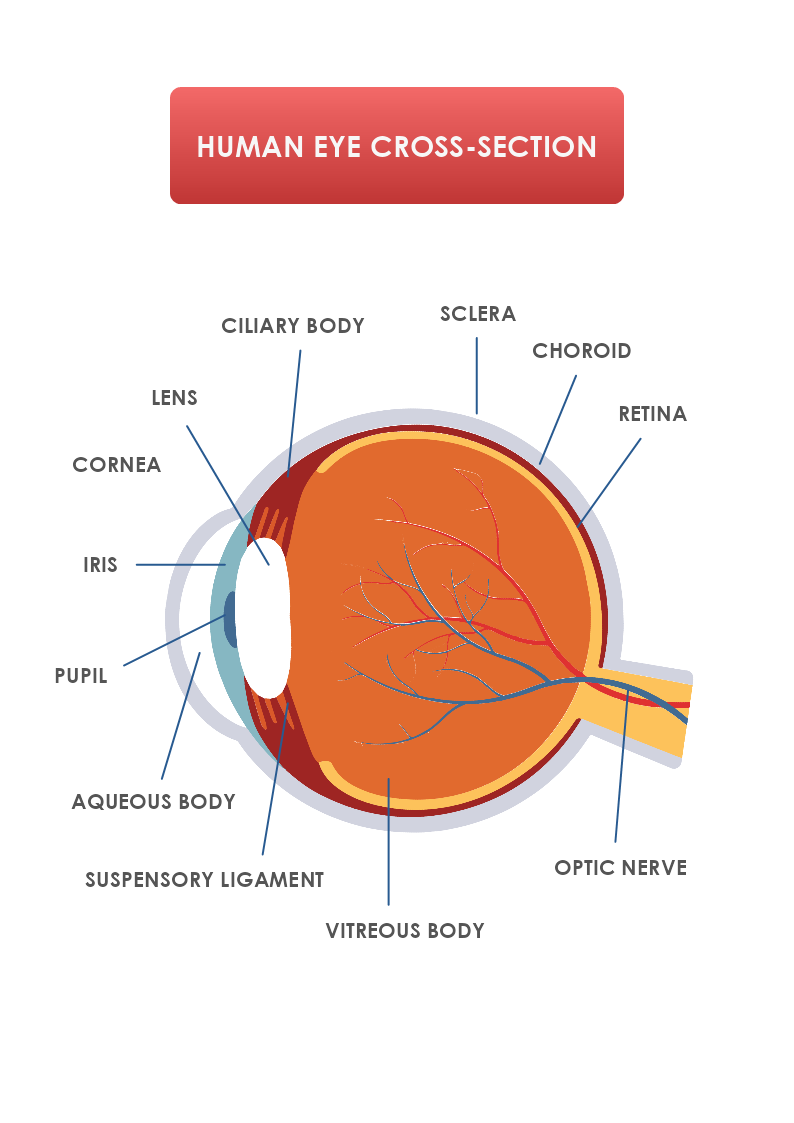
The first part that light reaches when striking the eye, is the cornea. The cornea is a dome positioned over the center of the eye. Its function is to bend the light passing through it.
The second part that light reaches is the pupil and the iris. The pupil’s and iris’s function is to regulate the amount of light that gets through. If too much or too little light passes through it can hinder one’s vision.
The lens is deeper inside the eye. They help to shape and create precise images. In some occasions, the shape of the lens is manipulated to help the eye get a clear picture of things. It also depends on the proximity of the object being viewed. The lens flattens to properly focus light received from distant objects and becomes rounder for nearer objects.
After light passes the lens, it strikes the millions of photoreceptors cells in the retina. There are 2 known types of photoreceptors, rods, and cones. Rods work in less light and create black-and-white images, and cones work in bright light and allow for color vision.
Nerve impulses are sent to the brain via the optic nerve. This action is caused by the photoreceptors of the retina that react to the light that hits them.
The photoreceptors of the retina react to the light that hits them and causes nerve impulses to be sent to the brain via the optic nerve. The brain interprets and classifies visual information.
The “white of the eye” is the tough outer shell called the sclera. Inside the eye is a fluid known as the vitreous humor. It is a jelly-like substance that helps give the eye its shape. Another fluid part of the eye is the aqueous humor, which lubricates the iris.
The muscular iris moves to shrink the pupil if there is too much light and widen it if there is not enough.
Some of the actions are involuntary actions of the brain.
A lack of green or red cones is more common than a lack of blue cones or any cones at all.
Color blindness is caused by the lack of one of three types of cones.
The brain is responsible for the interpretation and classification of visual information.